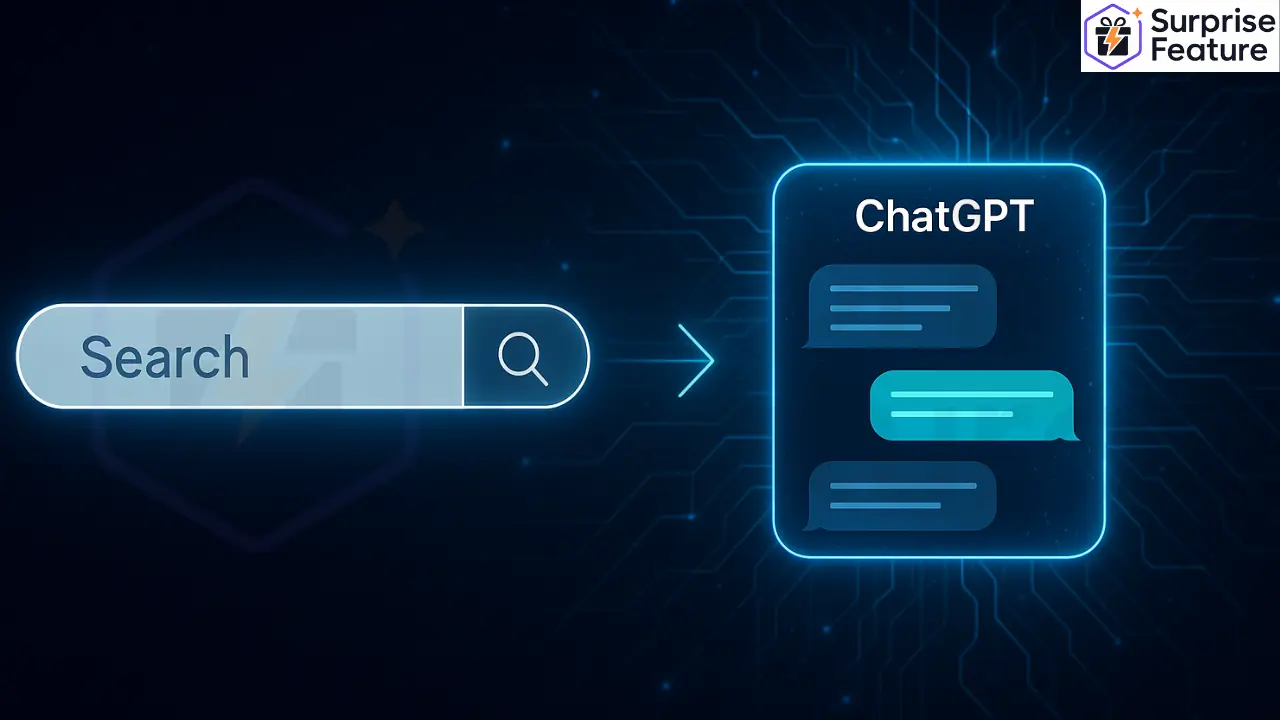How ChatGPT Manages 2.5 Billion Daily Prompts & What It Reveals About the Future of Search

Introduction: A New Era of AI Search and Scale
In 2025, ChatGPT crossed a monumental threshold: it now processes over 2.5 billion prompts every single day. This staggering volume—up from around 1 billion daily in late 2024—marks ChatGPT as one of the most used AI tools in history. For comparison, Google Search still dominates with over 13 billion daily searches, but ChatGPT’s conversational approach is carving a unique niche in how people access and process information.
From quick answers to in-depth explanations, from writing assistance to research, ChatGPT is no longer just a curiosity—it’s a mainstream productivity tool. But how does it handle this massive workload, and what does its rise reveal about the future of search?
The Infrastructure Behind 2.5 Billion Daily Prompts
1. Distributed Cloud Architecture
At its core, ChatGPT relies on a global network of data centers and high-performance GPUs optimized for AI workloads. These systems are designed for distributed processing, meaning that millions of prompts can be handled simultaneously with minimal latency. Advanced load-balancing ensures that user queries are routed to the fastest and most available nodes.
2. Model Optimization for Speed and Cost
OpenAI has continually refined its models—like GPT‑4o and lightweight variants—to process queries with fewer computational resources while retaining quality. Quantization and token-level caching allow the AI to respond faster without sacrificing accuracy.
3. Intelligent Prompt Routing
Not every query needs the full power of a large model. ChatGPT intelligently decides when to use smaller models (for basic tasks like grammar checks or quick factual queries) versus when to invoke more complex reasoning models. This hybrid approach allows it to scale effortlessly to billions of interactions per day.
Why People Are Turning to ChatGPT Over Traditional Search
1. Conversational, Answer-First Experience
Traditional search engines list web links and snippets, while ChatGPT delivers a direct, conversational answer. Users find this format more engaging and time-saving. The ability to ask follow-up questions makes it feel like an interactive assistant rather than a static search tool.
2. Integration Across Platforms
ChatGPT is no longer limited to its web interface. It’s integrated into Microsoft Office, web browsers, mobile apps, and even custom GPTs tailored for specific industries. This omnipresence makes it a go-to solution for productivity tasks.
3. Custom GPTs and Specialized Agents
With the launch of Custom GPTs and autonomous agents, businesses and individuals can create AI tools personalized for their needs—whether it’s financial analysis, marketing content, or coding support.
The Future of Search: What ChatGPT’s Growth Tells Us
1. A Shift from Keywords to Conversations
Traditional SEO relies heavily on keyword targeting and link structures. ChatGPT flips the script by focusing on user intent. It answers questions as if it were a knowledgeable human, prioritizing context and clarity over keyword density.
2. AI as a Gateway to Information
Instead of browsing multiple web pages, users can get a consolidated, accurate answer within seconds. This convenience is changing how content creators think about visibility—it’s no longer enough to rank on Google; content must also be structured in ways that AI assistants can reference or summarize.
3. Rise of Conversational SEO
Content strategies are evolving to meet the demands of AI-driven discovery. Websites that provide concise, high-value answers in a conversational tone will have a competitive edge.
- Create FAQ-rich pages with schema markup.
- Write content that directly addresses questions people ask AI tools.
- Use long-tail, natural language queries to anticipate conversational prompts.
Case Study: Students Using ChatGPT as a Tutor
A growing number of students now rely on ChatGPT for daily study assistance. Rather than browsing multiple sources, they ask the AI for quick explanations, summaries, or even practice quizzes. This highlights a critical shift—users increasingly value tools that save time and simplify information retrieval.
Implications for Businesses and Content Creators
1. AI-First Content Strategy
Businesses must think beyond traditional SEO and consider how their content appears in AI-driven platforms. This includes providing clean, structured information and adopting a conversational style that aligns with AI models.
2. Brand Visibility in an AI World
To remain visible, brands need to be cited or summarized within AI answers. Building domain authority, creating high-quality content, and establishing credibility through backlinks remain critical, but the focus is shifting toward content usability for AI systems.
How ChatGPT’s Growth Reshapes SEO
SEO experts are already adapting their strategies to include AI-focused optimization. The future will involve a blend of traditional search engine tactics and “AI ranking factors”—criteria that determine how likely AI is to surface a piece of content in response to a user prompt.
Top Strategies for 2025 and Beyond:
- Answer-based content: Write in-depth answers that AI tools can summarize accurately.
- Semantic keyword clusters: Use topic-based keyword groups instead of single phrases.
- Structured data: Enhance content with schema and meta information for AI parsing.
- User-focused tone: Write like you’re solving a reader’s problem, not just targeting a keyword.
What’s Next for ChatGPT?
OpenAI’s roadmap suggests future updates will further improve reasoning, reduce hallucinations, and expand integrations. With competitors like Google’s Gemini and Anthropic’s Claude also vying for attention, the AI search landscape will continue to evolve at lightning speed.
Conclusion: The New Search Paradigm
ChatGPT’s ability to manage 2.5 billion daily prompts is more than a technical feat—it’s a sign that the way we interact with information is fundamentally changing. Content creators, marketers, and businesses must embrace conversational, AI-friendly strategies to remain relevant in this new era.